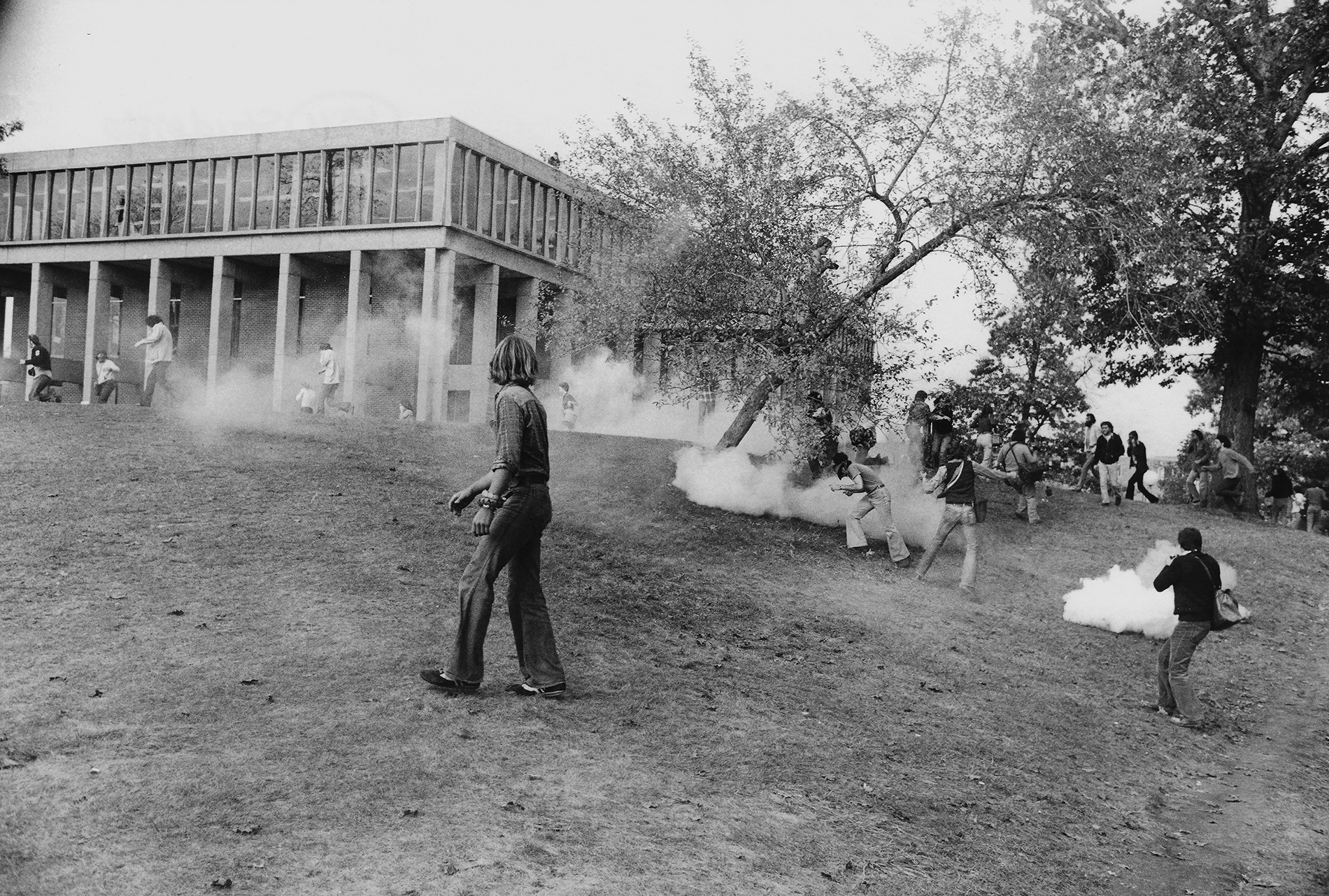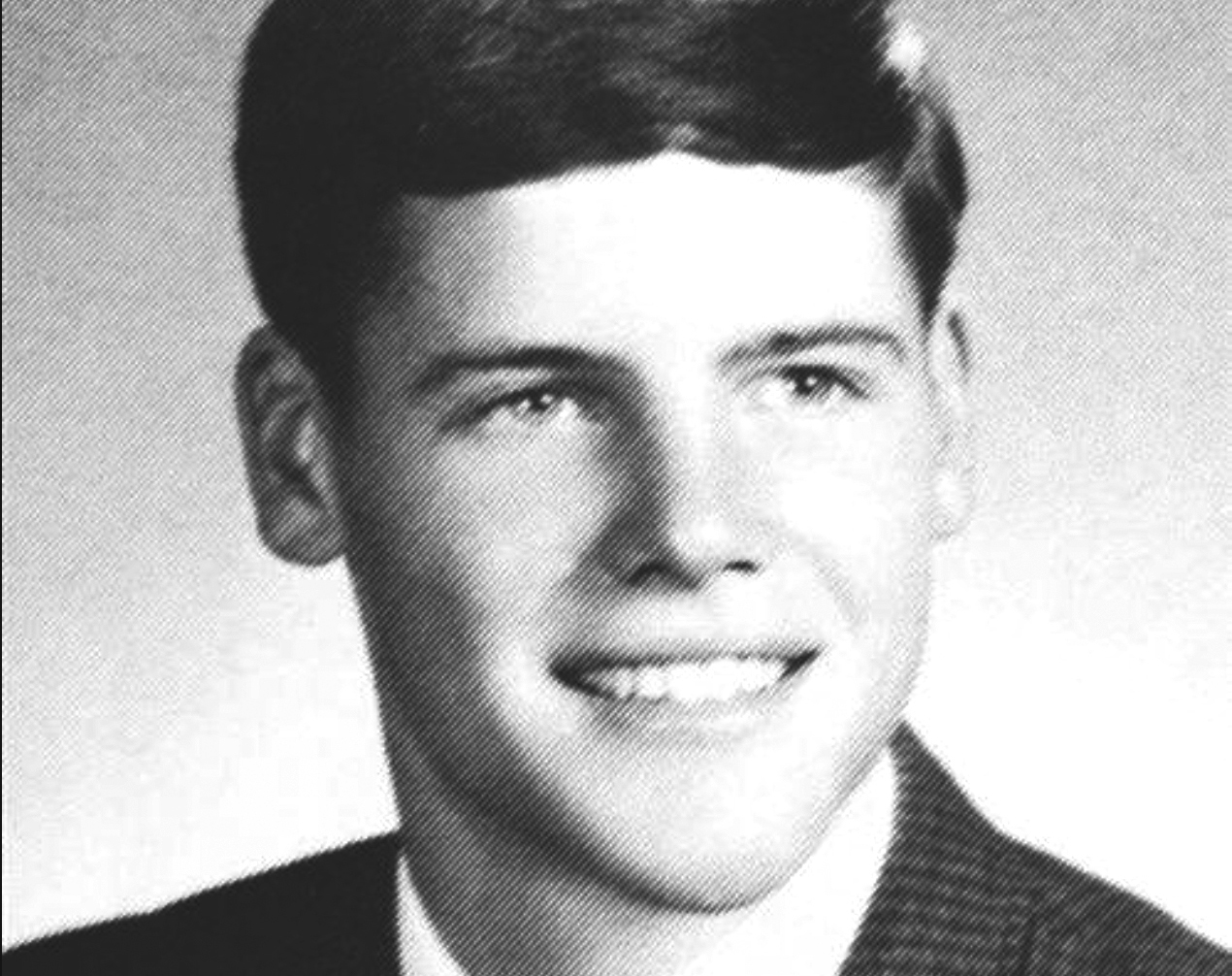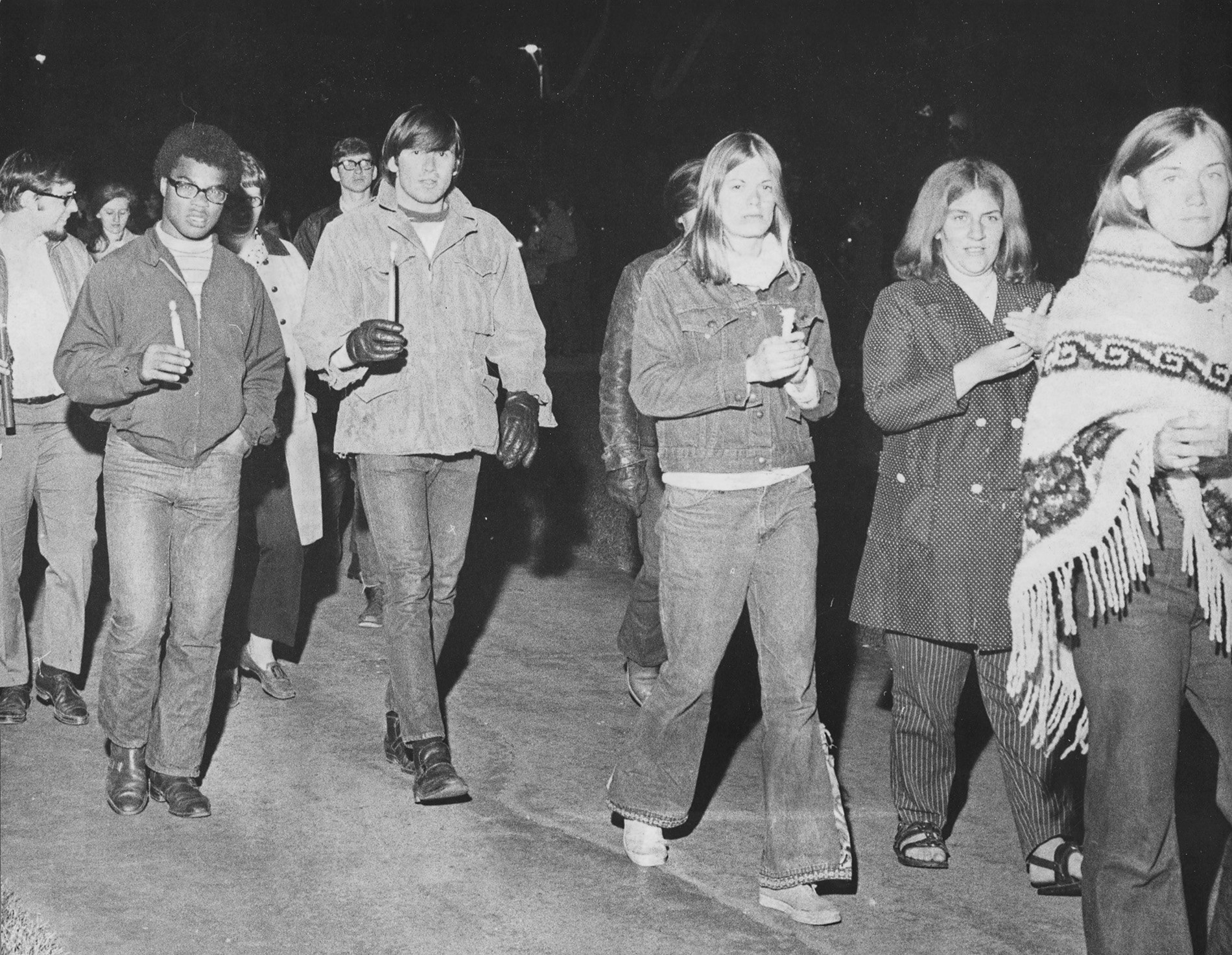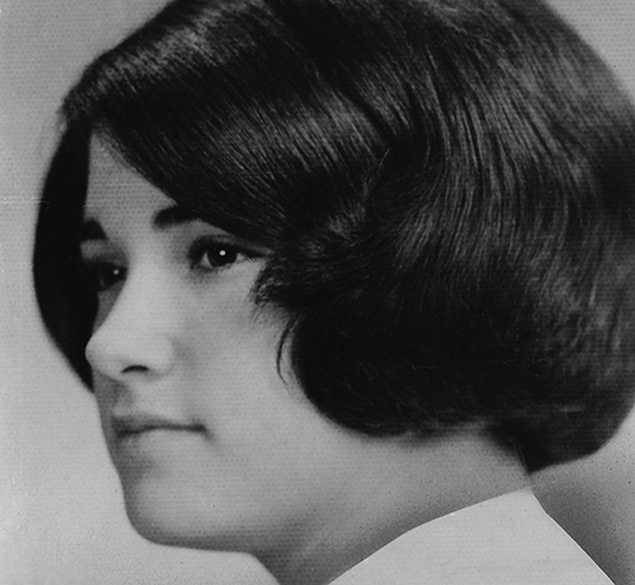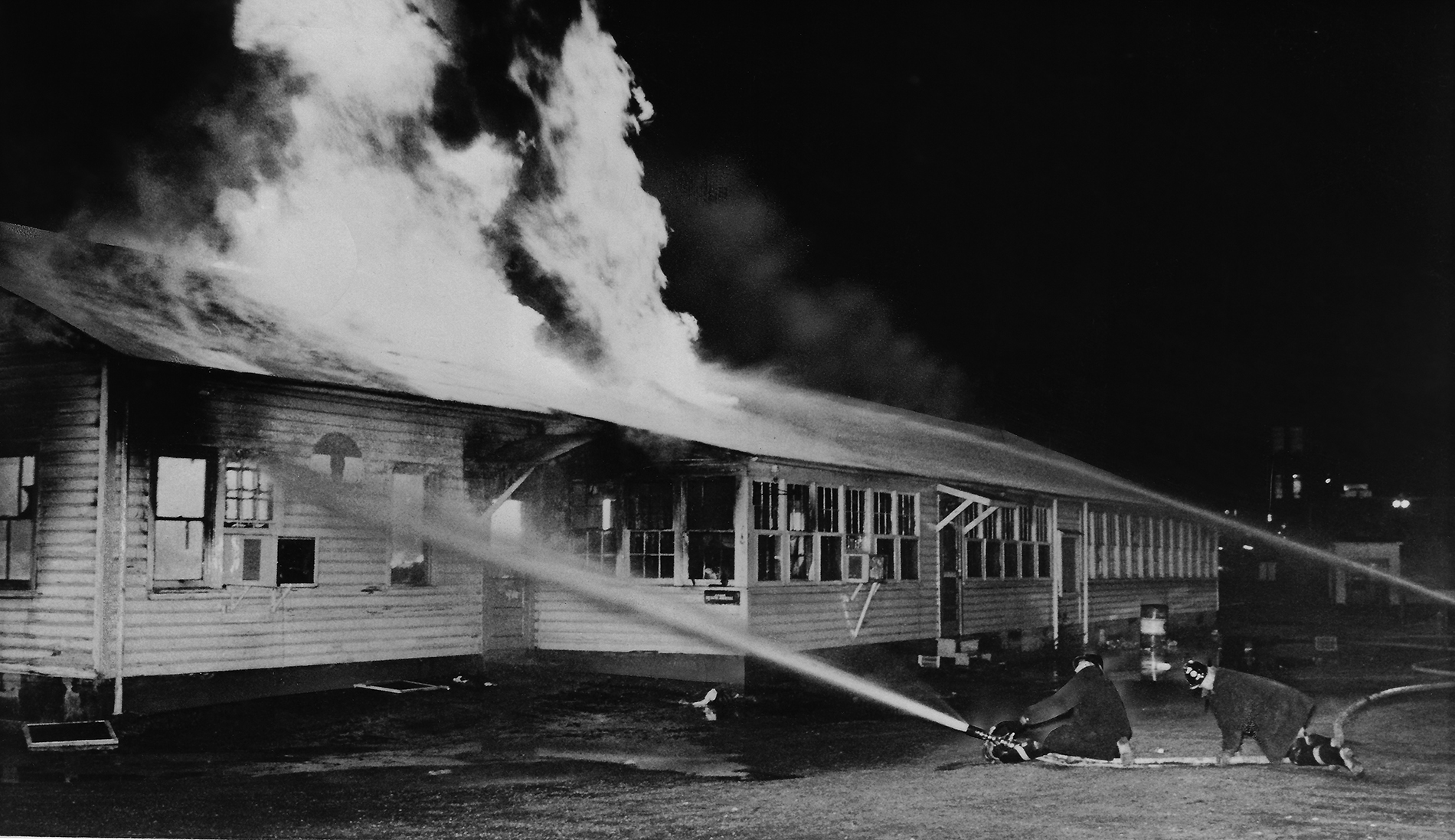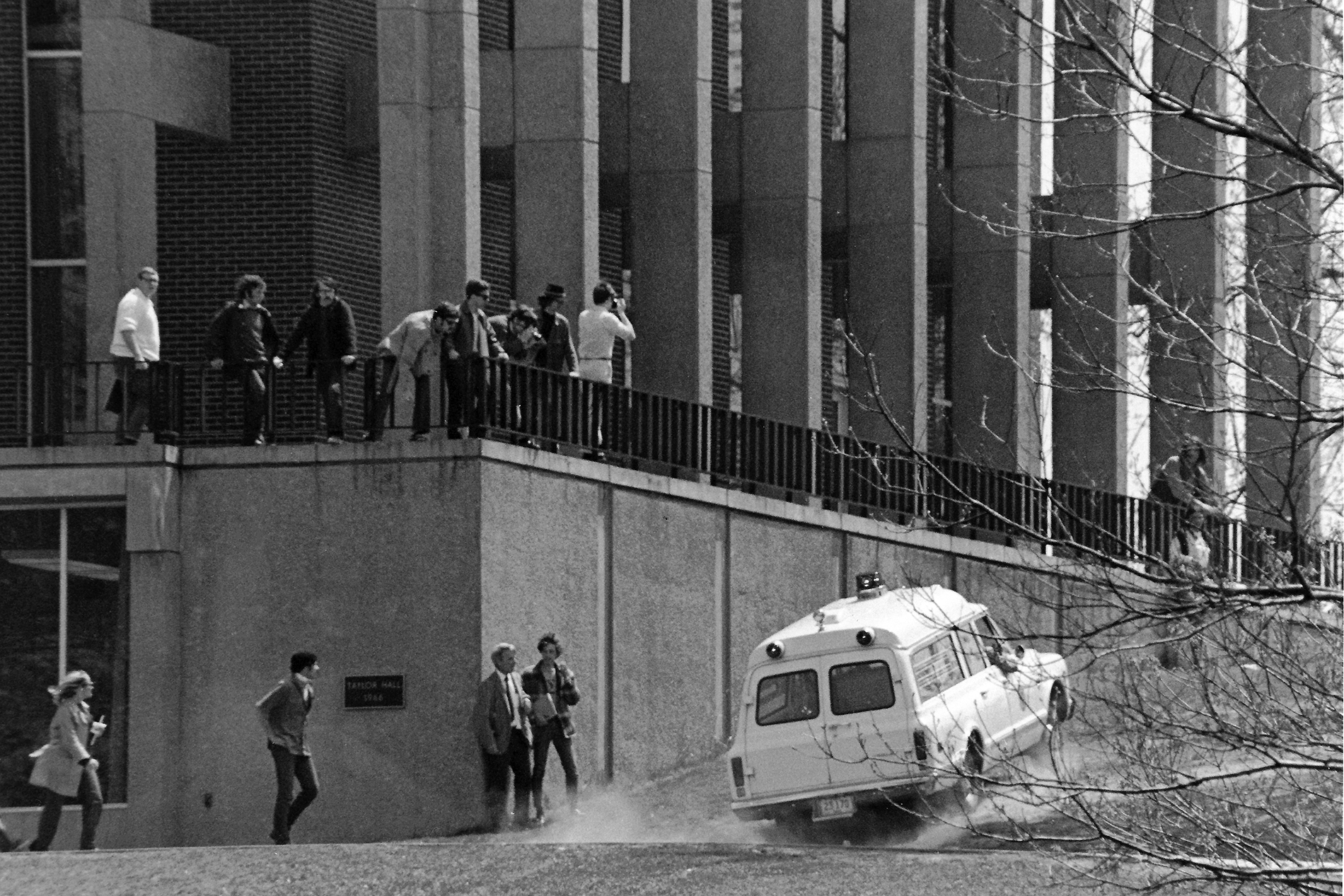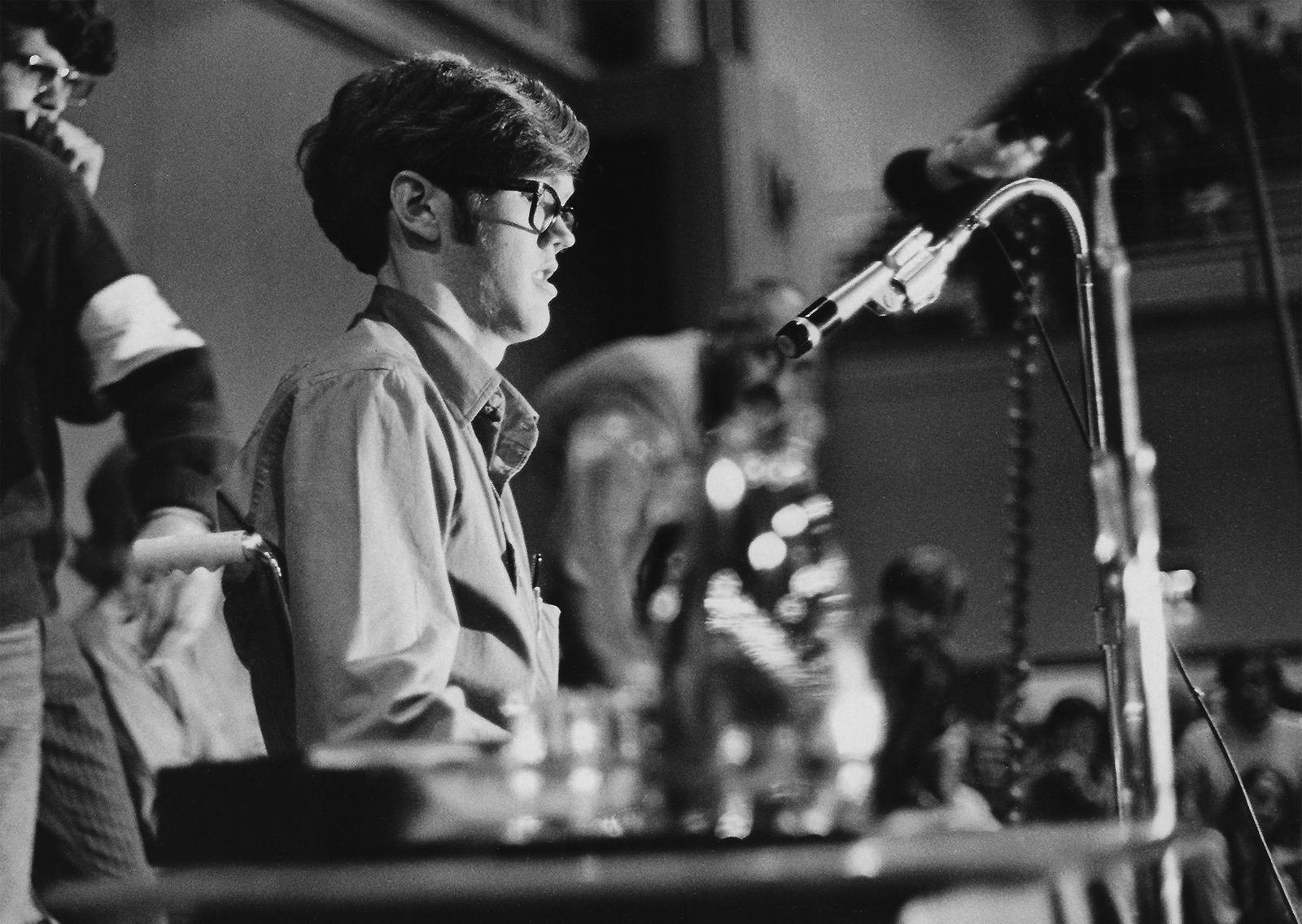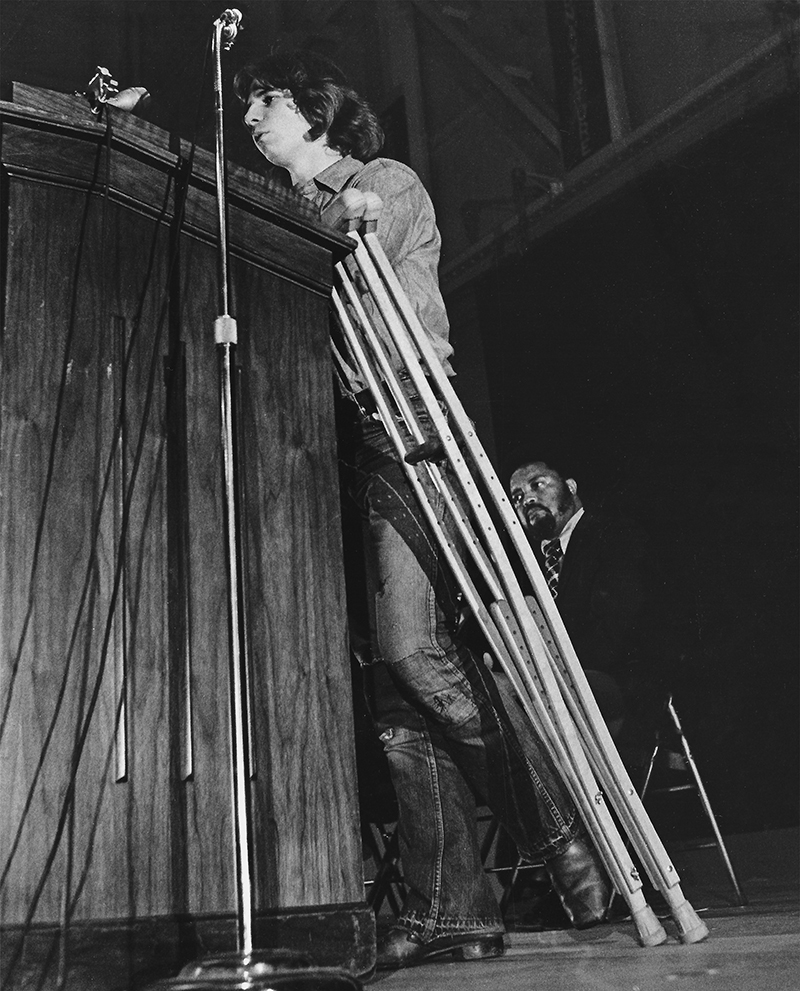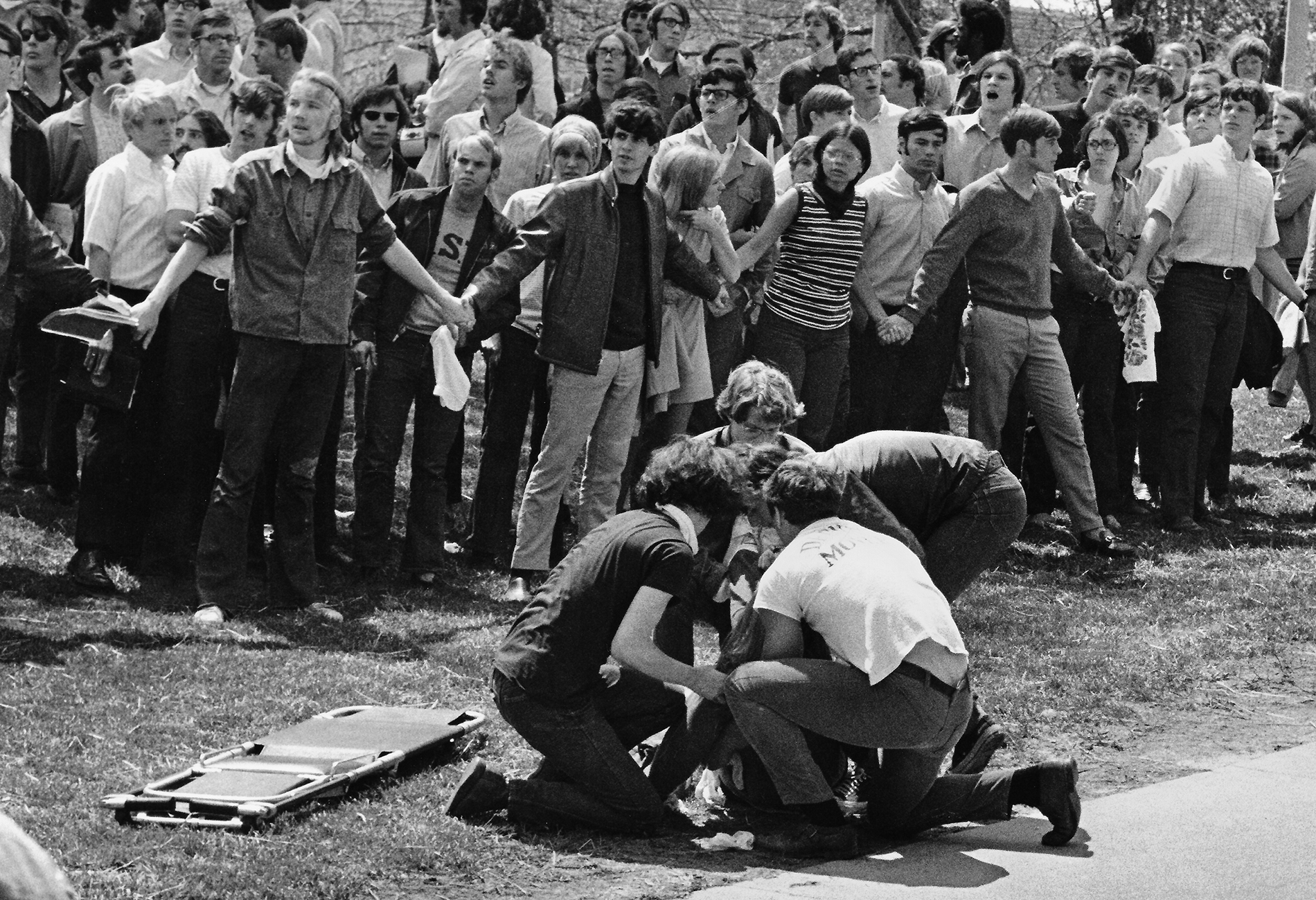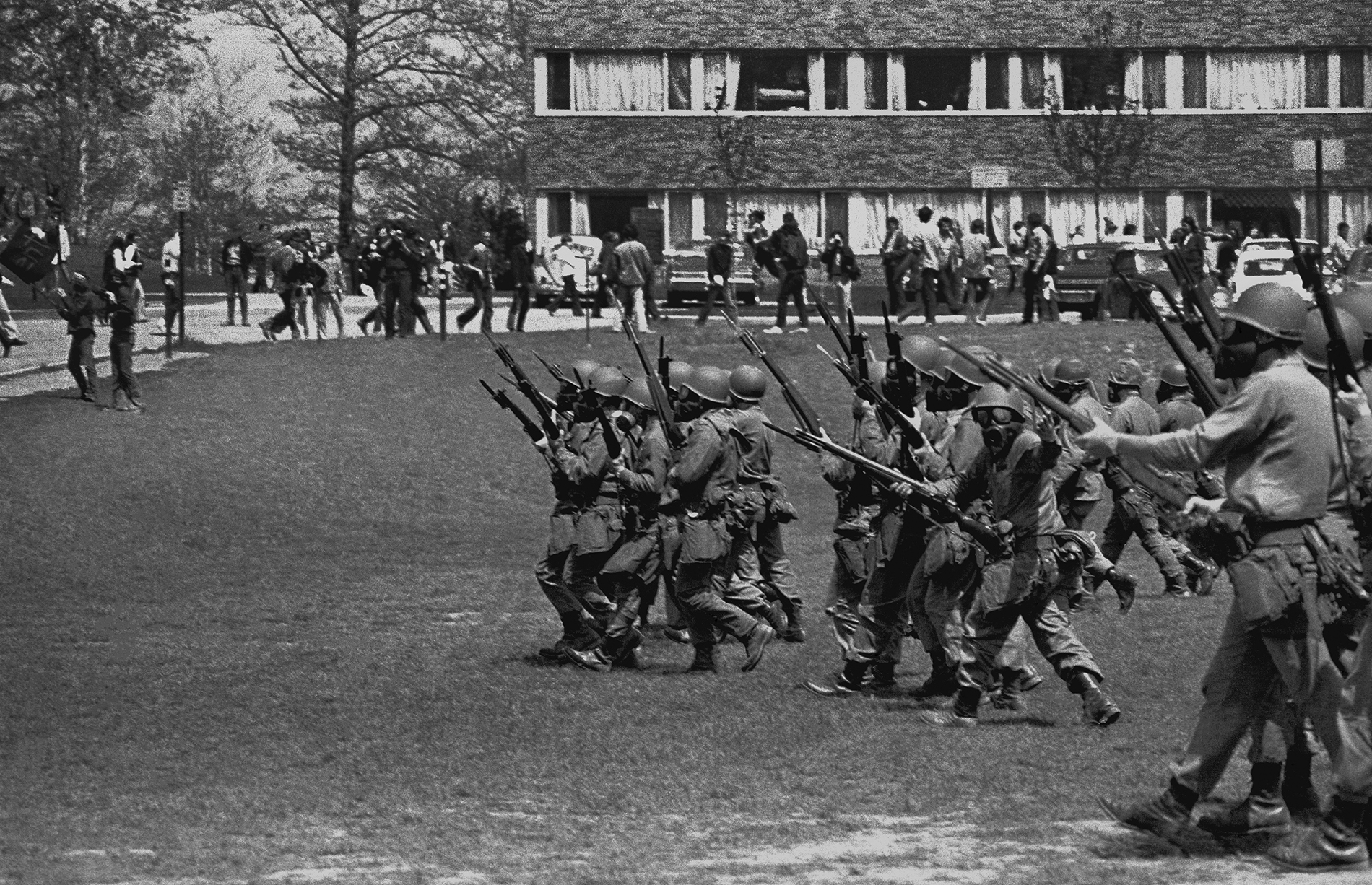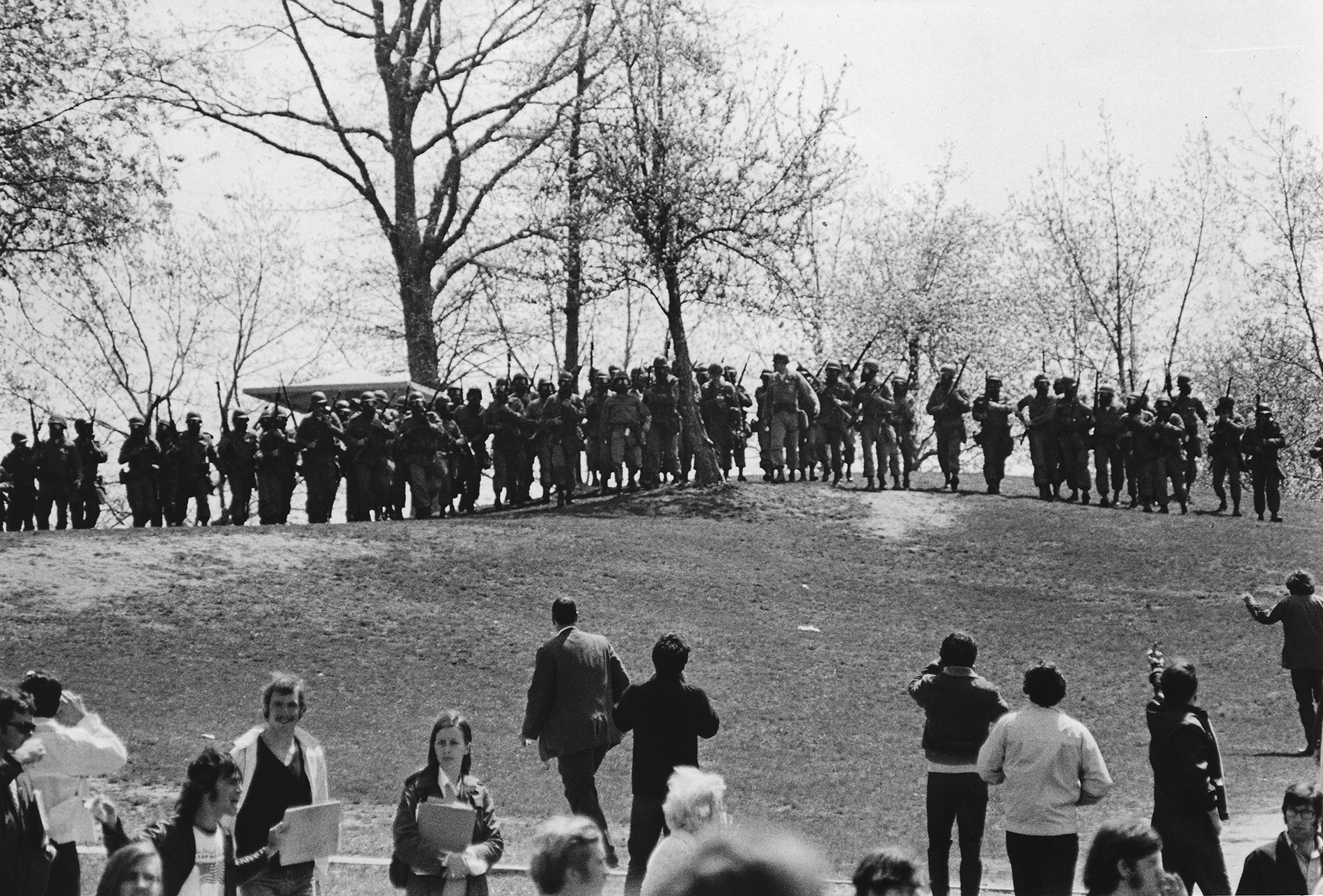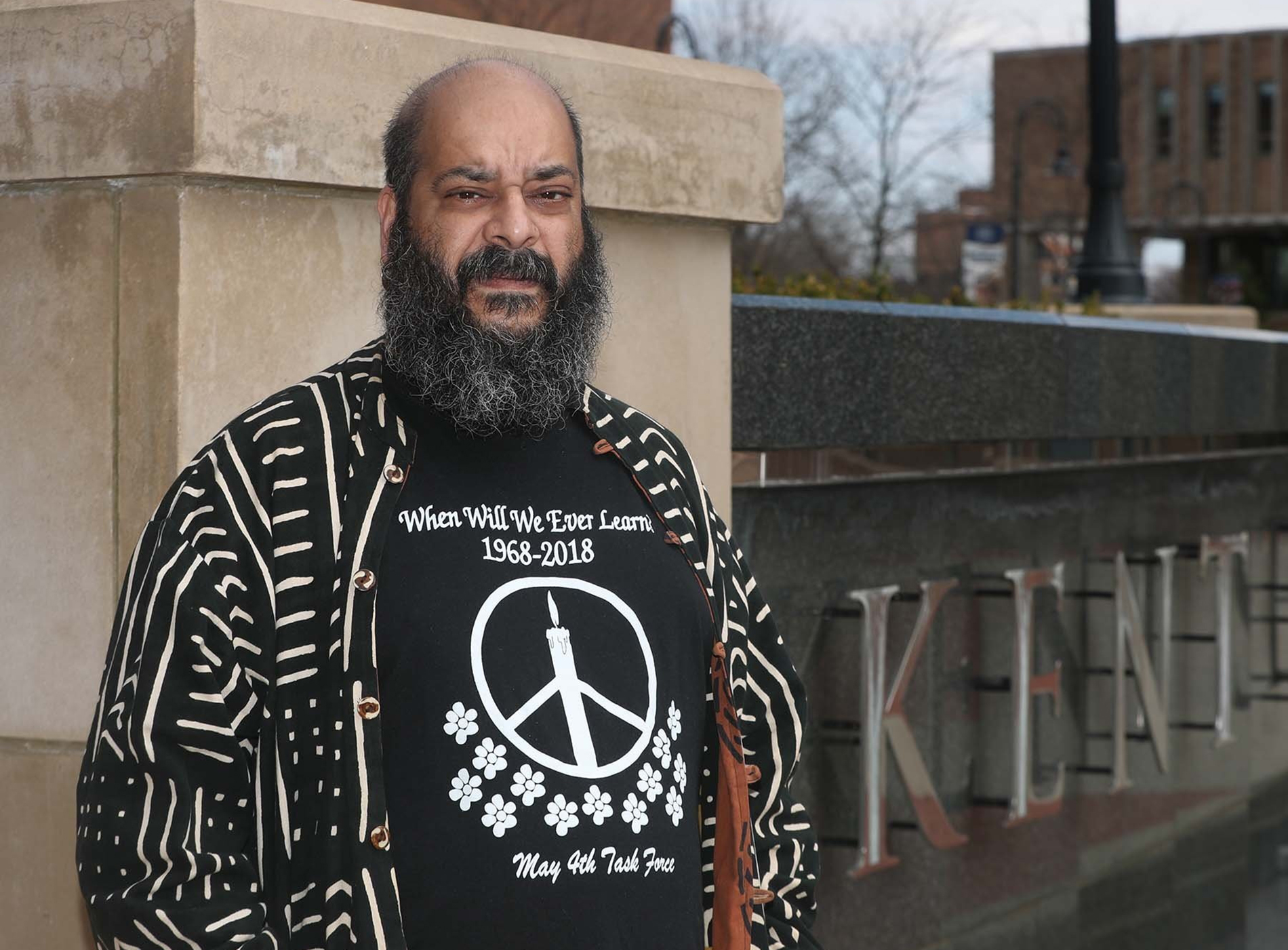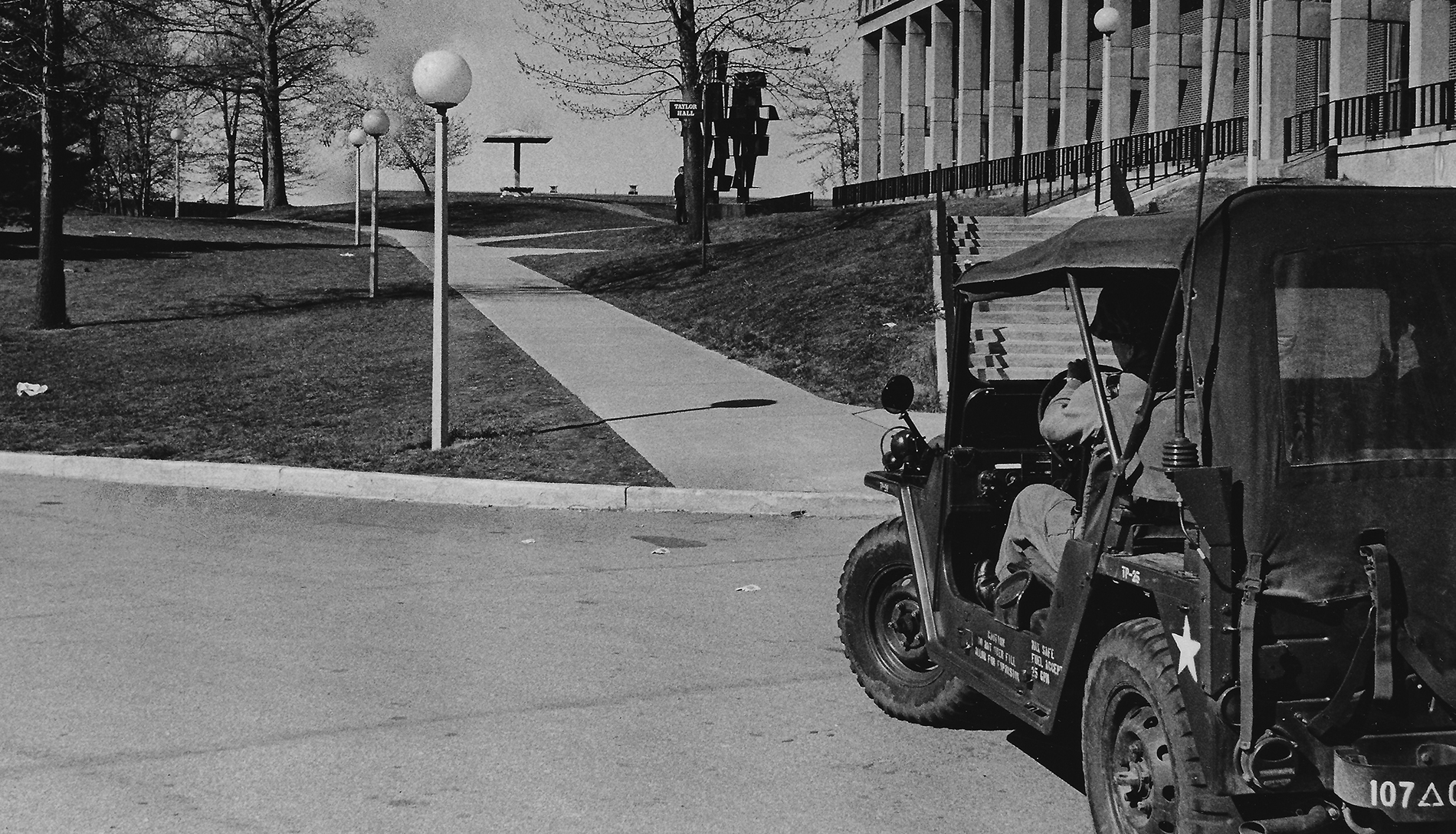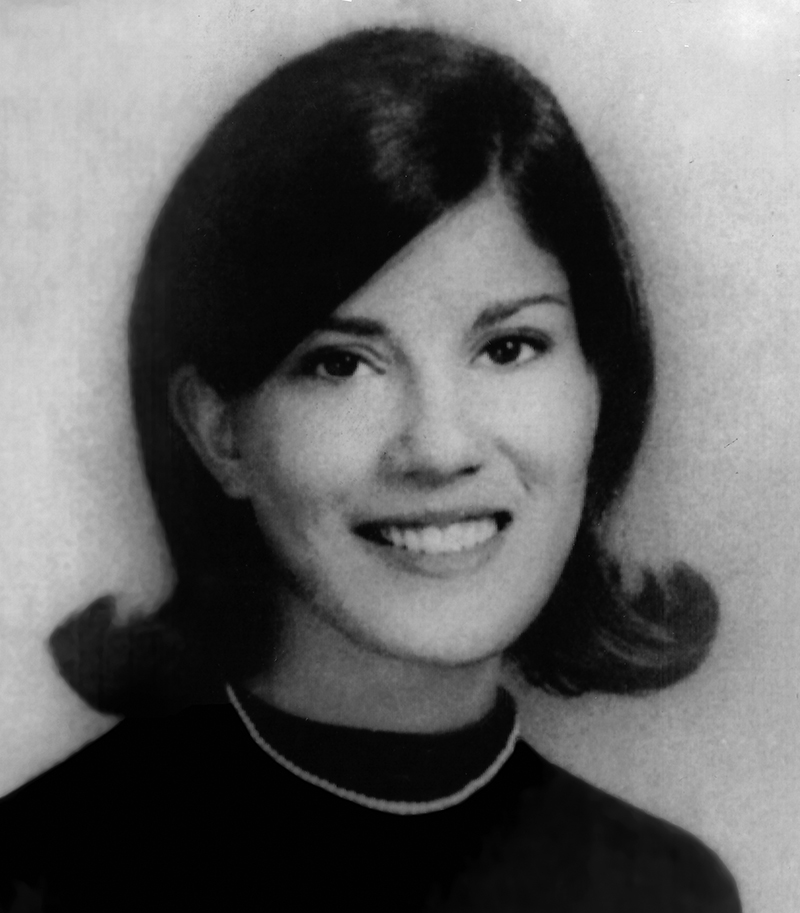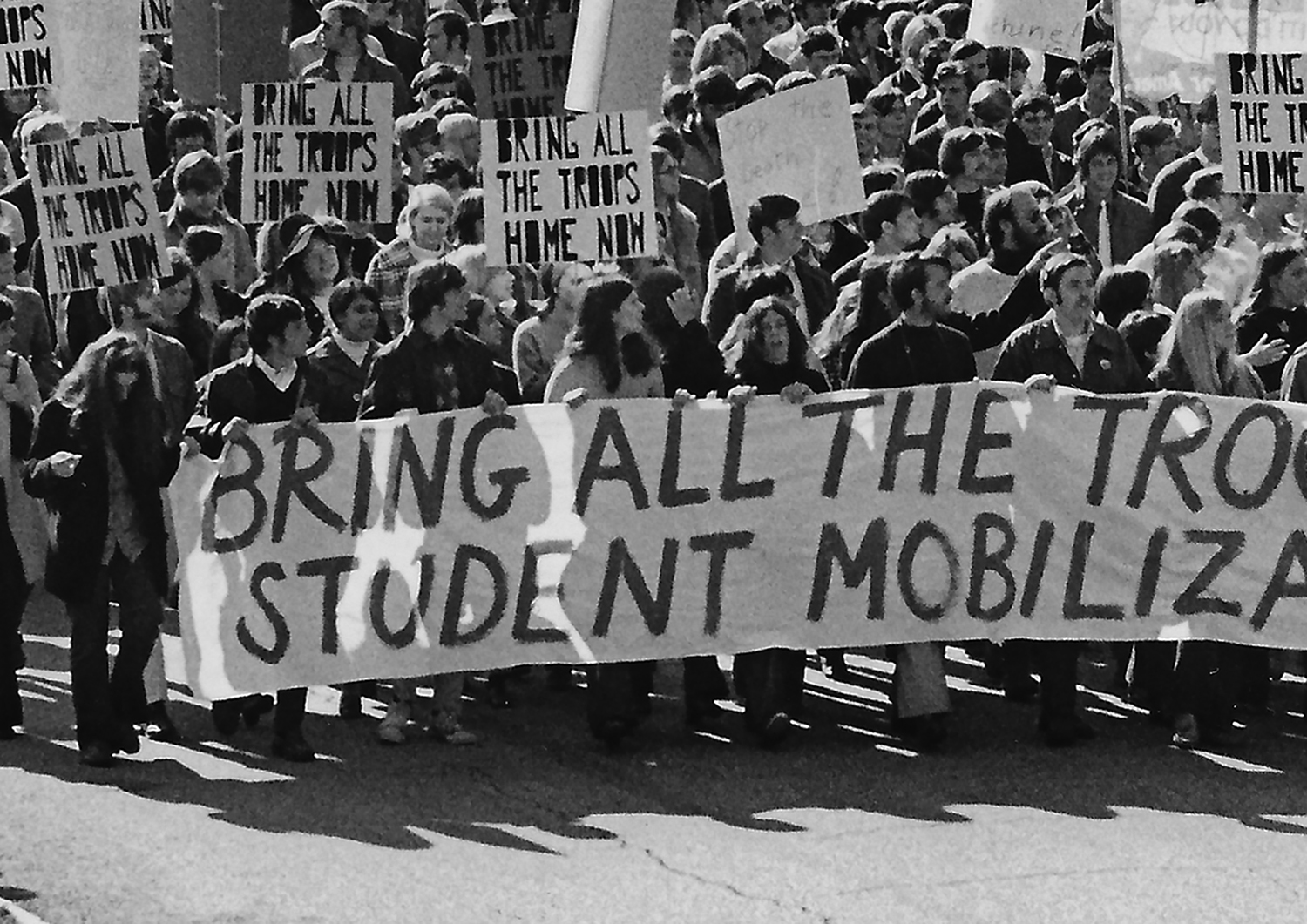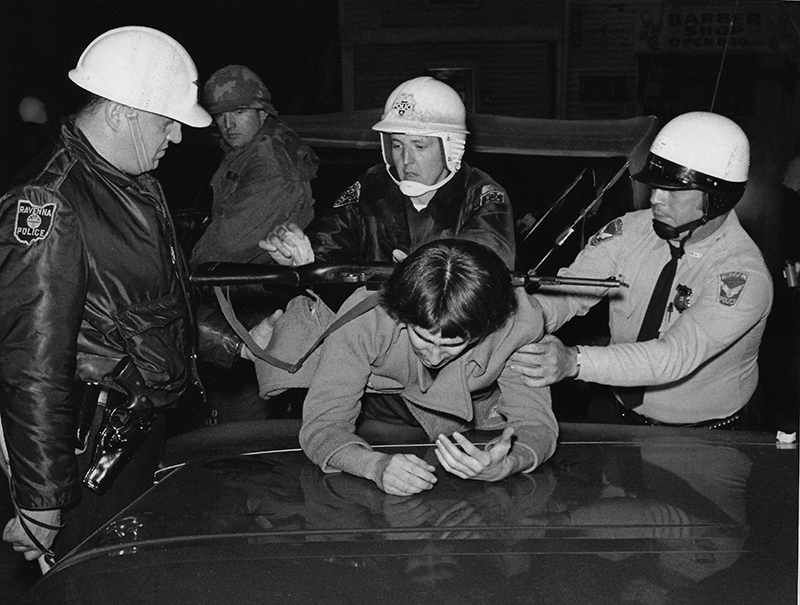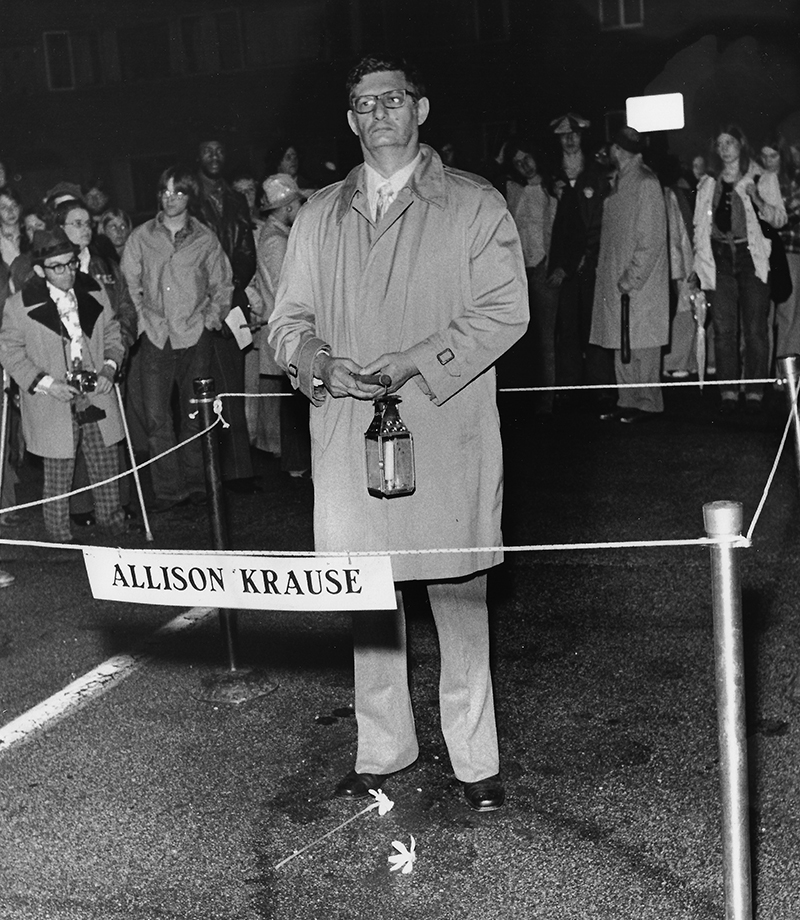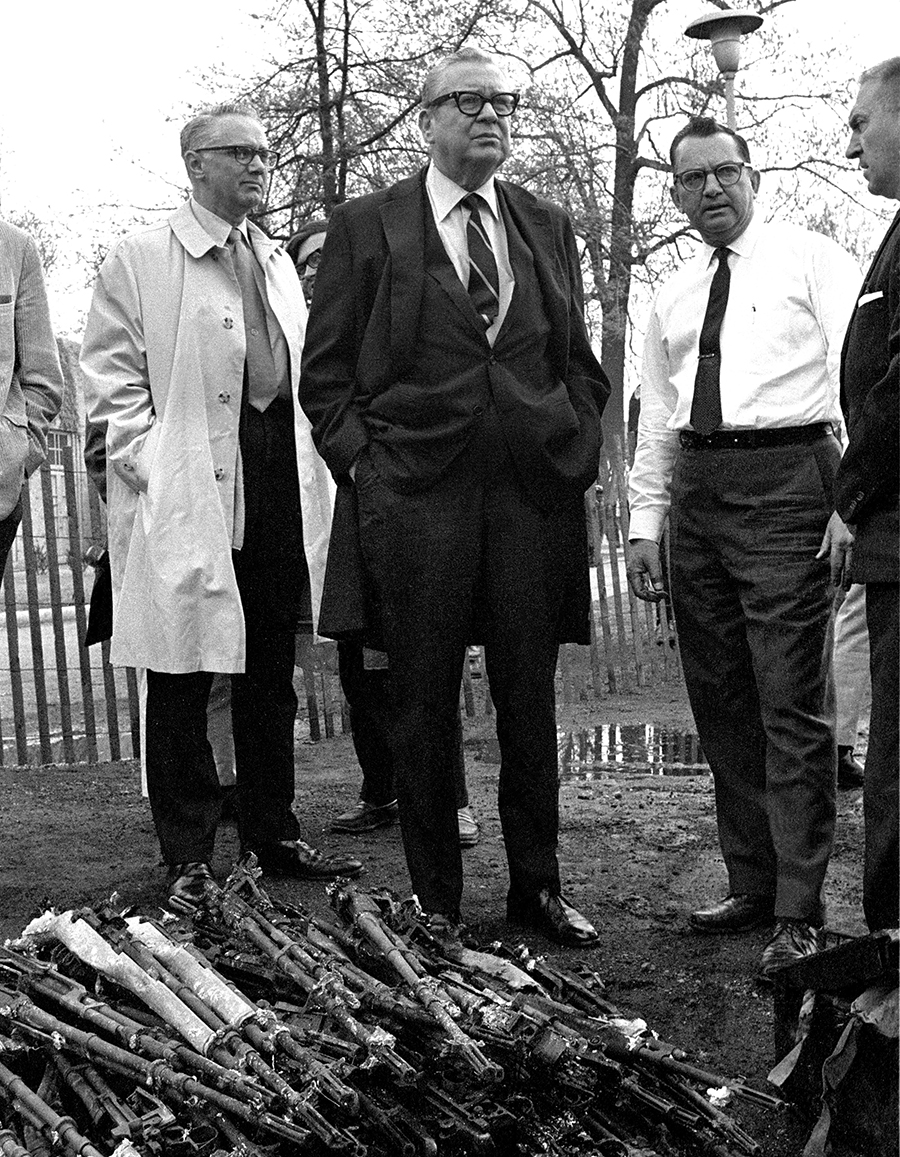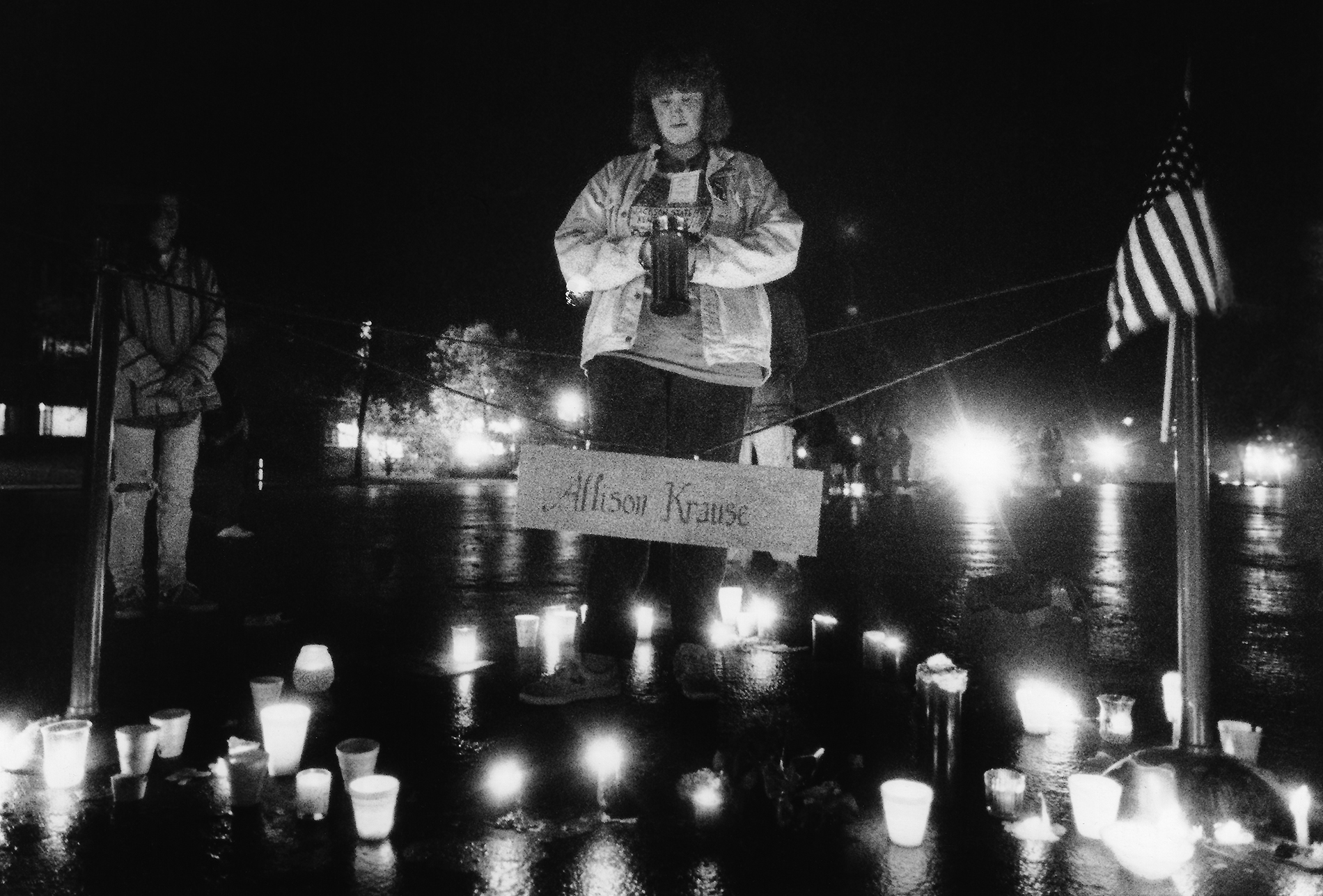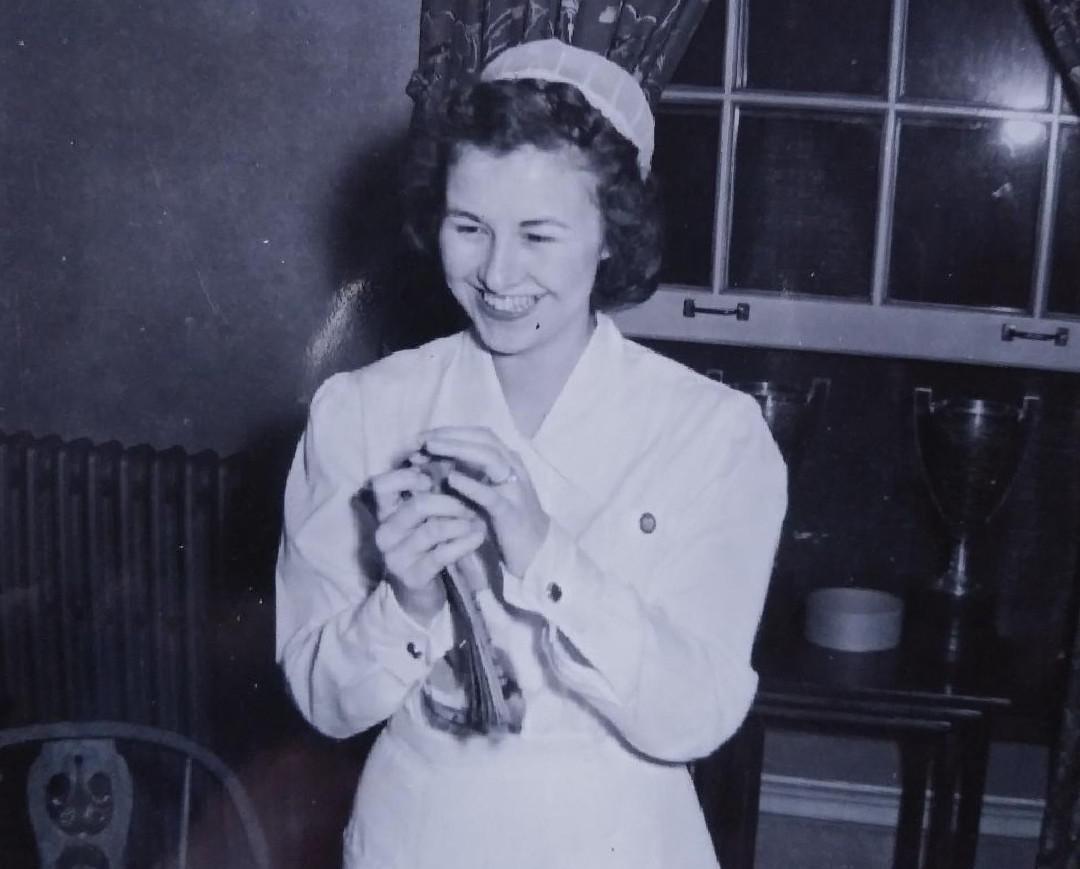Kent State shootings: Allison Krause’s college dream turned nightmare
By Paula Schleis for the Akron Beacon Journal
May 3, 2020
MAY 3, 1970: GUARD ON KENT STATE CAMPUS
Editor’s note: This seven-part series relives the days leading up to the May 4, 1970, shootings at Kent State University, through the lives of some of those most affected. Today, the events of Sunday, May 3, 1970, and the life of freshman Allison Krause.
Sunrise brought a fragile calm to the Kent State University campus, and the warm, breezy spring day lured students out of their dorms.
But it was not like any other campus on any other Sunday. There were 1,000 Ohio Army National Guard troops armed with M1 rifles, tanks and jeeps lining the roads, and the ashes of the ROTC building burned by rioters the previous night.
Allison Krause and her constant companion, boyfriend Barry Levine — both freshmen — ventured out to explore this alien setting. They strolled among other students, sometimes laughing and joking, sometimes pausing for serious discussion about the last few tumultuous days.
Then they started for the guard encampment near the front of the campus. Allison really wanted to talk to the guards.
For years, KSU had been her dream.
Allison Krause was one of four Kent State University students who was shot and killed by the Ohio National Guard on May 4, 1970.
She and her younger sister, Laurie, were born in Cleveland to Doris and Arthur Krause. When the family was in the mood for a day trip, they would drive 40 minutes to the college town to dine at Robin Hood. The restaurant overlooked the rolling green of the Kent campus from the corner of Lincoln and Main streets.
“You know, Mom, I’d like to come to school here when I’m old enough,” young Allison told her parents.
Allison grew into a tall, unconventional beauty who avoided makeup. Her high cheekbones, thick, dark hair and brown eyes had some describing her appearance as Mediterranean.
The family moved from Cleveland — first to Maryland, then to Pittsburgh — but her college plans never veered. When she turned 18, she made good on her promise to enroll at Kent State. Having graduated from high school in the top quarter of her class, she was accepted into the Honors College.
Now she was a freshly minted 19-year-old — her family came to the campus to celebrate her birthday the previous weekend — and her freshman year was coming to an end.
But Kent State had been a disappointment, and she was making plans to leave. The high school she’d attended in Maryland used an experimental teaching strategy. Kent State, by comparison, was stifling and regimented, she’d told her parents.
Barry was the one good thing to come from her time in Kent. He was a freshman, too, from Valley Stream, New York. He was slight of build, almost fragile. Kind, soft-spoken, and sported a beard and shoulder length hair. The two became inseparable.
Allison only had one or two other friends who were truly close.
Nearly six months before the National Guard shootings at Kent State University, Allison Krause, who died on May 4, 1970, helped hold a sign protesting the Vietnam War during a Moratorium Day march in downtown Kent on October 15, 1969. Krause is holding the banner above the word “ALL.” Bill Hunter | Akron Beacon Journal
She wasn’t a joiner. Under her name in the high school yearbook, not a single group activity was listed. Her interests were more solitary. Drawing, sculpting, painting, reading, cooking, listening to music.
That didn’t stop her from having — and sharing — her opinions with others. She was deeply interested in social issues, and strongly opposed to the Vietnam War. She attended the national Vietnam War Moratorium Day in Washington the previous November, waving a small American flag while she marched.
At Kent State, she’d attended a Students for a Democratic Society rally once, concluding their speeches made no sense.
She wasn’t remaining at Kent State, anyway. In the coming fall, Allison and Barry would begin their sophomore year in a new school in Buffalo, New York.
They never expected their last month at Kent State to be so eventful.
It started Thursday, when Allison and Barry joined other students in the television room at Moulton Hall to listen to President Richard Nixon explain America’s invasion of Cambodia. Friday morning, she went to the Western Union office to send Nixon a telegram calling his actions “an outright crime,” but the office was closed.
That evening, she and Barry joined friends in downtown Kent, but left long before the riot started. When the events of the evening made headline news on Saturday, she called her parents to reassure them she was safe in her dorm when it had happened.
Police arrest a protester as a National Guardsman looks on in Kent, May 3, 1970. Don Roese | Akron Beacon Journal
Saturday night, Allison and Barry were on their way to a movie when they spotted the demonstrators assembling on the Commons. They perched on a stretch of lawn known as Blanket Hill to watch the action below, but ended up playfully wrestling in the grass.
When the crowd started getting more aggressive, the couple retreated to a dorm. They watched from a window as the ROTC building was burned to the ground.
Sunday morning, she told Barry she understood why the National Guard had been called. There had been too much useless destruction. Making small business owners downtown suffer and burning buildings was not going to stop the Vietnam War, she said.
Arthur Krause, father of Allison Krause, stands on the site in the parking lot of Prentice Hall where his daughter was shot by National Guardsmen in 1970 on the Kent State University campus, May 3, 1975. Krause was part of the candlelight vigil and march. Ron Kuner | Akron Beacon Journal
Then Ohio Gov. James Rhodes came to town. Kent State was a political opportunity for Rhodes, who was running for a U.S. Senate seat, the primary election just two days away.
He held a news conference, played up his “law and order” platform, and gave an inflammatory speech calling Kent State demonstrators “the worst type of people we harbor in America.” He promised the guard would “use whatever force necessary to drive them out of Kent.”
And so Allison and Barry set off to talk to some of these guards who had taken over their campus.
Allison spotted one standing alone, a lilac sprouting from his gun barrel, placed there by another student. She took Barry by the arm and pulled him with her as she approached the soldier.
The soldier had a pleasant face and smiled warmly. He was a student himself, at the University of Akron, he told them.
Allison asked him why he was guarding her campus. He didn’t want to be, he confessed. Then why didn’t he leave, Allison asked. He looked at the ground and softly muttered that he couldn’t.
A superior officer disturbed by the congenial conversation walked over and shouted for the young guardsman to identify himself and his division.
Where did he get that “silly flower” in his rifle muzzle, the officer demanded. The guardsman removed the flower and the officer took it, telling him to “straighten up, act like a soldier and forget all this peace stuff.”
As the officer turned to leave, Allison snatched the flower from his hand.
“What’s the matter with peace?” she called after him as he turned and walked away. “Flowers are better than bullets!”
Ohio Governor James A. Rhodes stands for a photo op near a pile of drill rifles that were destroyed in the fire that burned down the Kent State ROTC building on May 2, 1970. Rhodes came to the Kent State campus Sunday, May 3, 1970, with state, federal, and local officials to observe the results of protests the previous two days on campus and in the city of Kent. At right is Ohio National Guard Adjustant General Sylvester Del Corso. Paul Tople | Akron Beacon Journal
Allison had a compassionate, tender side.
She’d spent time as a volunteer at St. Elizabeth’s Hospital in Washington, D.C., visiting with the mentally insane. She was going to be spending the summer working at a camp for children with disabilities. She often roamed campus carrying a stray cat named Yo-Yo, which she’d rescued and had been hiding in her dorm.
Allison was studying both special education and art, wanting to find a way to combine both interests.
But Allison was also stubborn, strong-willed, and had an overwhelming passion that could set off a quick temper. It flared as the departing officer turned to glare at her.
“Pig!” she yelled at him.
Just as Allison’s peaceful demeanor broke, the deceptive calm on the campus was crumbling. At 8 p.m., demonstrators gathered at the Commons, leading the Guard to announce the immediate enforcement of a new curfew.
A volunteer stands vigil in the early morning hours of May 4, 1990, within a cordoned-off area commemorating the spot where Allison Krause died on May 4, 1970. Susan Kirkman Zake | Akron Beacon Journal
When the crowd refused to disperse, the Ohio Riot Act was read and tear gas was fired from helicopters hovering overhead. There were injuries this time, with some students bayoneted for not retreating.
Allison and Barry were a short distance from the scene when some guardsmen turned in their direction. The couple fled in a haze of tear gas and were pursued all the way to the Tri-Towers dorm, but the door had been bolted. A resident assistant refused to let anyone in.
As the Guard continued to approach, the couple and other students banged frantically on the glass, begging to be let in. Finally, a student inside slipped past the resident assistant and opened the door.
Allison, eyes watering from the tear gas and crying from the frightening chase, took refuge in the room of a classmate.
In the early morning hours, she called her mother, rousing her from her sleep.
Kent State was making headlines again, and, not for the first time, she felt compelled to put her parents’ minds at ease.
Don’t worry, she told her mother. It’s over now, and she was safe.
Marching down the same street in downtown Kent where his late daughter protested the Vietnam War in 1969, Arthur Krause (with sunglasses at lead of group) joins a protest against building a Gym Annex at Kent State University on Aug. 20, 1977. Allison Krause was killed by the Ohio National Guard during student protests May 4, 1970. A 1969 Mortatorium Day march saw Allison also protest on Main Street. Tom Marvin | Akron Beacon Journal
In 15 hours, on the hill where Allison and Barry playfully rolled in the grass, the National Guard will turn and raise their guns.
In 15 hours, Barry Levine will cradle Allison in his arms as her life’s blood pours onto the surface of a parking lot.
In 15 hours, Allison’s passionate proclamation that “Flowers are better than bullets” will begin its ascent into a national anti-war mantra.
Sources: MAYDAY: Kent State (1981) by J. Gregory Payne; Akron Beacon Journal; The Kent Stater; The May 4 Shootings at Kent State University: The Search for Historical Accuracy (1998) by Jerry M. Lewis and Thomas R. Hensley; Thirteen Seconds: Confrontation at Kent State (1970) by Joe Eszterhas and Michael D. Roberts; Kent State: What Happened and why (1971) by James A. Michener.
